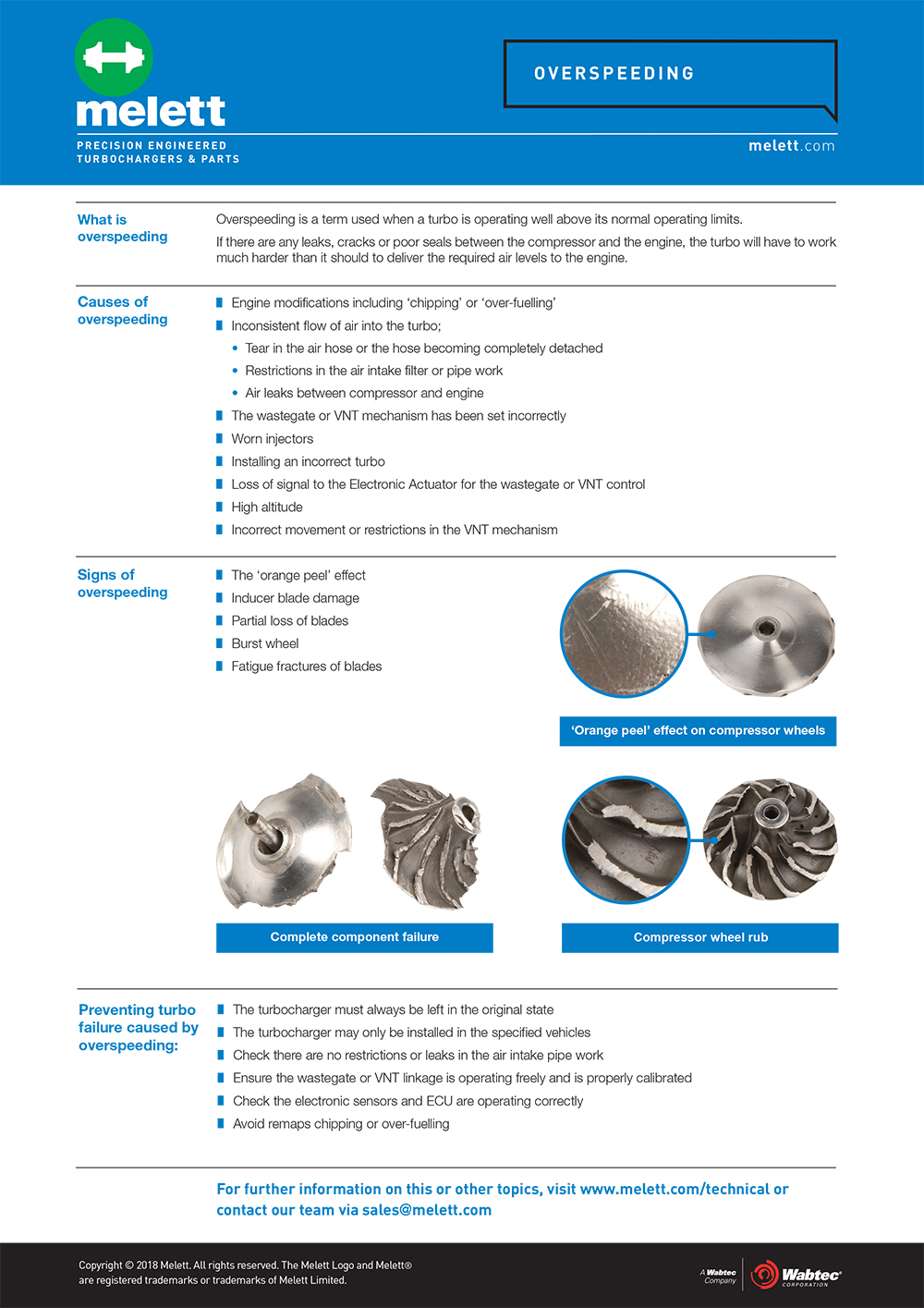Common turbo failure – overspeeding
What is Overspeeding?
Overspeeding is a term used when a turbo is operating well above its normal operating limits.
If there are any leaks, cracks or poor seals between the compressor and the engine, the turbo will have to work much harder than it should to deliver the required air levels to the engine.
View our Melett Turbo Tips video - How does Overspeeding cause turbocharger failure?
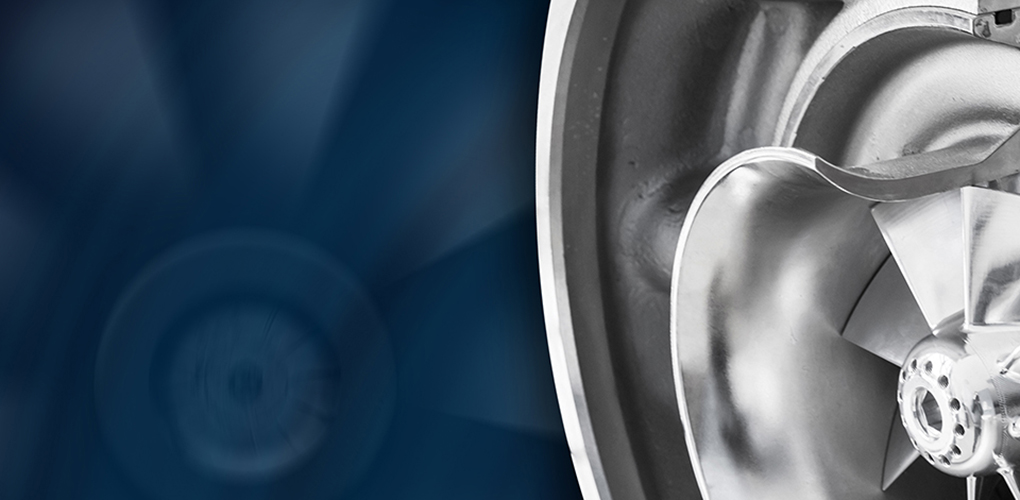
Today we will be discussing causes, signs and preventions associated with Overspeeding.
What is Overspeeding? Overspeeding is when the engine requires more air than the turbocharger can supply. The turbocharger then has to work outside of its usual operating limit to supply the engine with the air required.
Let’s take a look at some of the causes of Overspeeding.
Main causes of Overspeeding include…
Not enough airflow from the turbocharger to the engine. Reasons for this could be a torn air pipe, blocked air intake or a leak between the compressor and the engine.
Any chipping or remapping work to an engine must be carried out by a professional.
Incorrect airflow
Poor re-mapping work
One of the main components that will show signs of Overspeeding is the Compressor Wheel. Let’s look at the ‘Orange Peel’ effect on some Compressor Wheels, caused by Overspeeding.
When looking for the orange peel effect on a Compressor wheel, you may need to adjust the lighting and the angle of the compressor wheel.
Extreme cases of Overspeeding, you could see inducer blade damage, partial loss of blades, fatigue fractures or a bust Compressor Wheel.
Overspeeding can show the same signs of failure as Insufficient Lubrication. Take care when analysing all the major components, before diagnosing the failure, if you need help with this, check out our Diagnostic tool on the website.
All the information in this video is available in a downloadable PDF on our website. Here, you will find useful tips on how to prevent Overspeeding.
One way to prevent Overspeeding is to check the engine for oil leaks.
Melett Turbo Tip – Interesting Fact – When a turbocharger operates at high altitude, there is less oxygen, resulting in the turbocharger working harder. This can give the effect of Overspeeding and over time the turbocharger will fail.
Thank you for watching and we will see you next time for another Melett turbo tip video.
Enjoyed our Video? Press the like button, leave us a comment below or subscribe to our YouTube Channel to watch further videos from Melett.
Causes of overspeeding
- Engine modifications including ‘chipping’ or ‘over-fuelling’
- Inconsistent flow of air into the turbo
– Tear in the air hose or the hose becoming completely detached
– Restrictions in the air intake filter or pipe work
– Air leaks between compressor and engine - The wastegate or VNT mechanism has been set incorrectly
- Worn injectors
- Installing an incorrect turbo
- Loss of signal to the SREA (Simple Rotary Electronic Actuator) for the wastegate or VNT control
- High altitude
- Incorrect movement or restrictions in the VNT mechanism
Signs of overspeeding
- The ‘orange peel’ effect
- Inducer blade damage can be a consequence of housing rub
- Staining due to oxidation
- Partial loss of blades
- Burst wheel
- Fatigue fractures of blades
The ‘orange peel’ effect explained
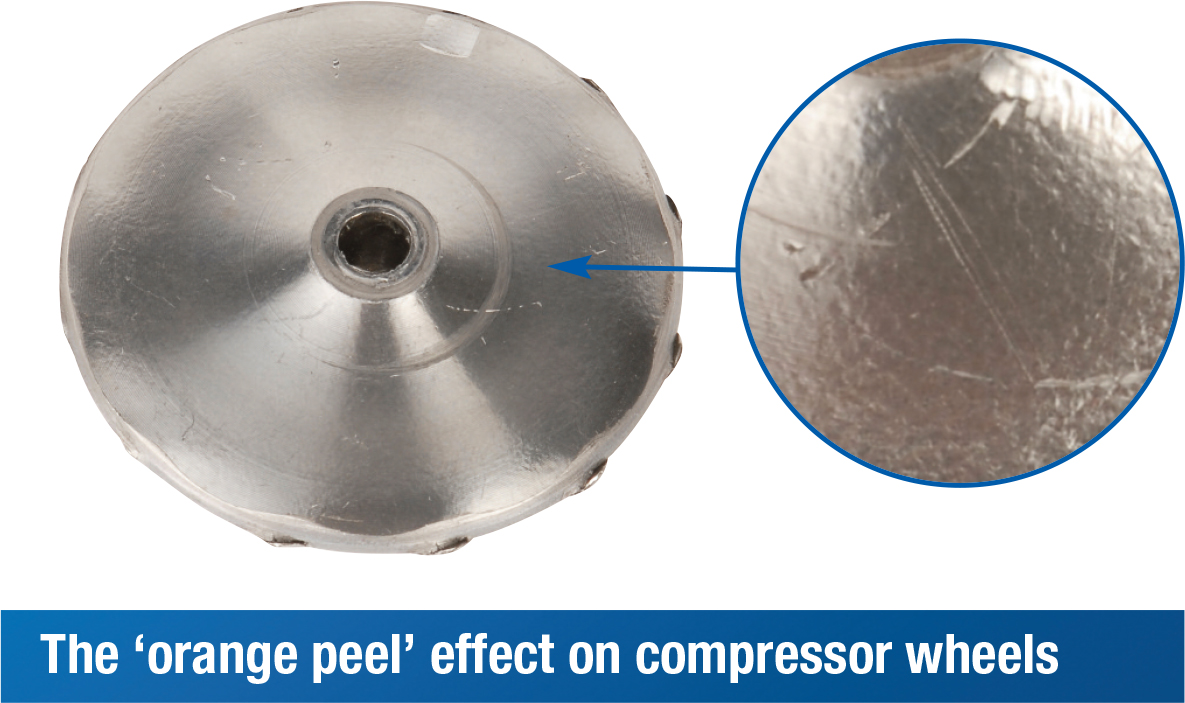
‘Orange peel’ effect on the back face of the compressor wheel is created by expansion and contraction. When the compressor wheel overspeeds it grows in size. This expansion causes cracks between the grain boundaries of the material. In mild cases the component will return back to its original state (like elastic) but in most cases these cracks begin to grow and eventually part of the hub can break away.
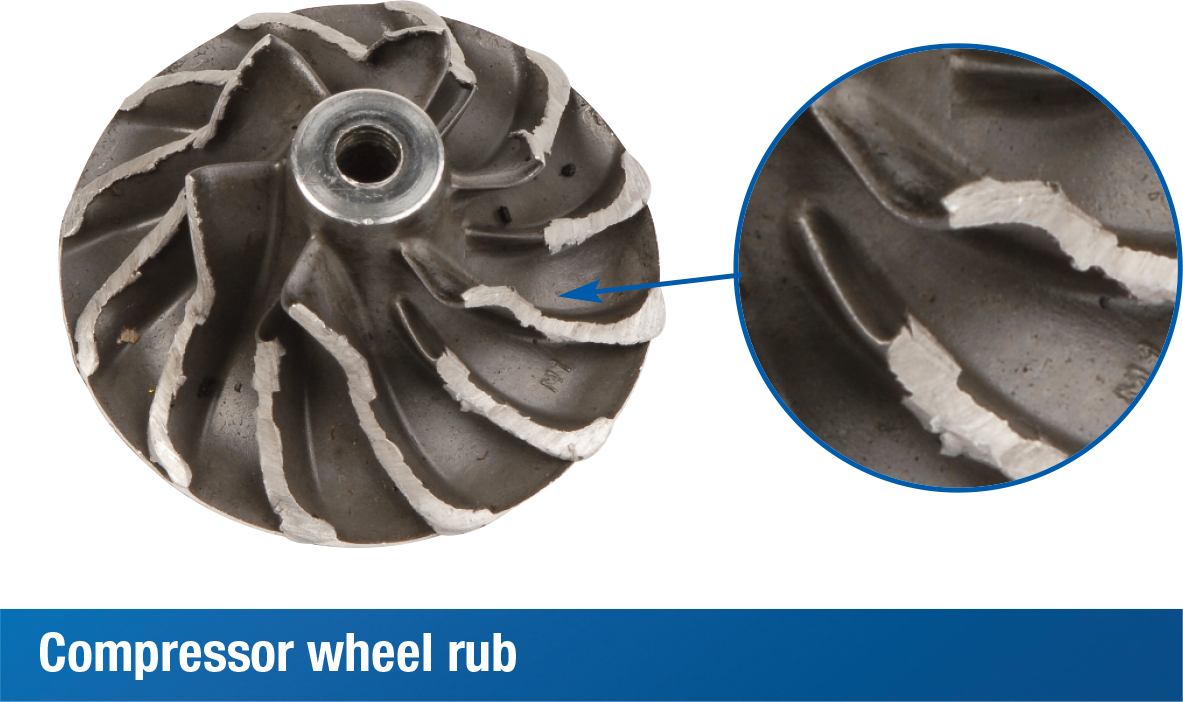
Quite often overspeeding is overlooked as a cause of the turbo failure as the symptoms of other failures can occur as a result of this overspeeding. Material transfer and discolouration of parts may indicate a lack of lubrication. Scoring to parts could indicate oil contamination, however the particles that have caused the scoring could have broken away from the bearings as a result of the overspeeding and any imbalance caused by this.
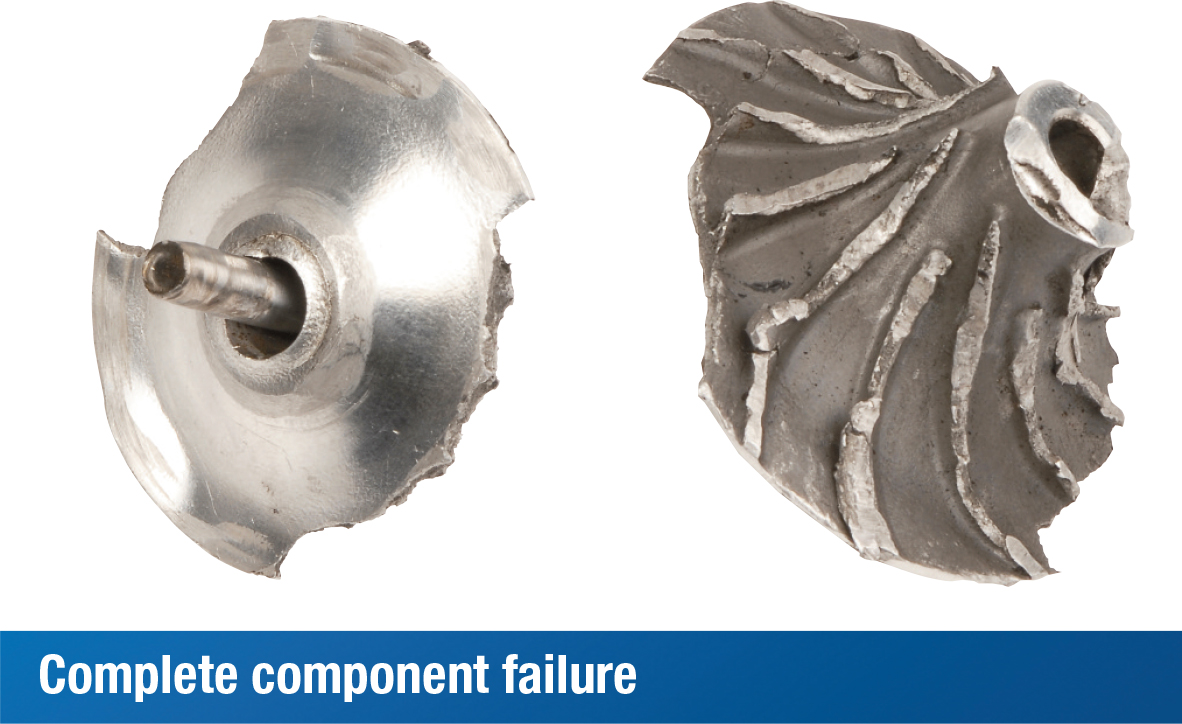
This imbalance can also cause compressor rub and turbine wheel rub in the housings, which in turn can lead to the shaft snapping and loss to part of the inducer blades. All in all overspeeding causes a lot of damage and is often the primary failure mode! Recognising these features when diagnosing a warranty return can save time and money.
Preventing turbo failure caused by overspeeding
- The turbocharger must always be left in the original state
- The turbocharger may only be installed in the specified vehicles
- Check there are no restrictions or leaks in the air intake pipe work
- Ensure the wastegate or VNT linkage is operating freely and is properly calibrated
- Check the electronic sensors and ECU are operating correctly
- Avoid remaps chipping or over-fuelling
For further information on this or other topics, please contact Melett Technical Support – [email protected].


